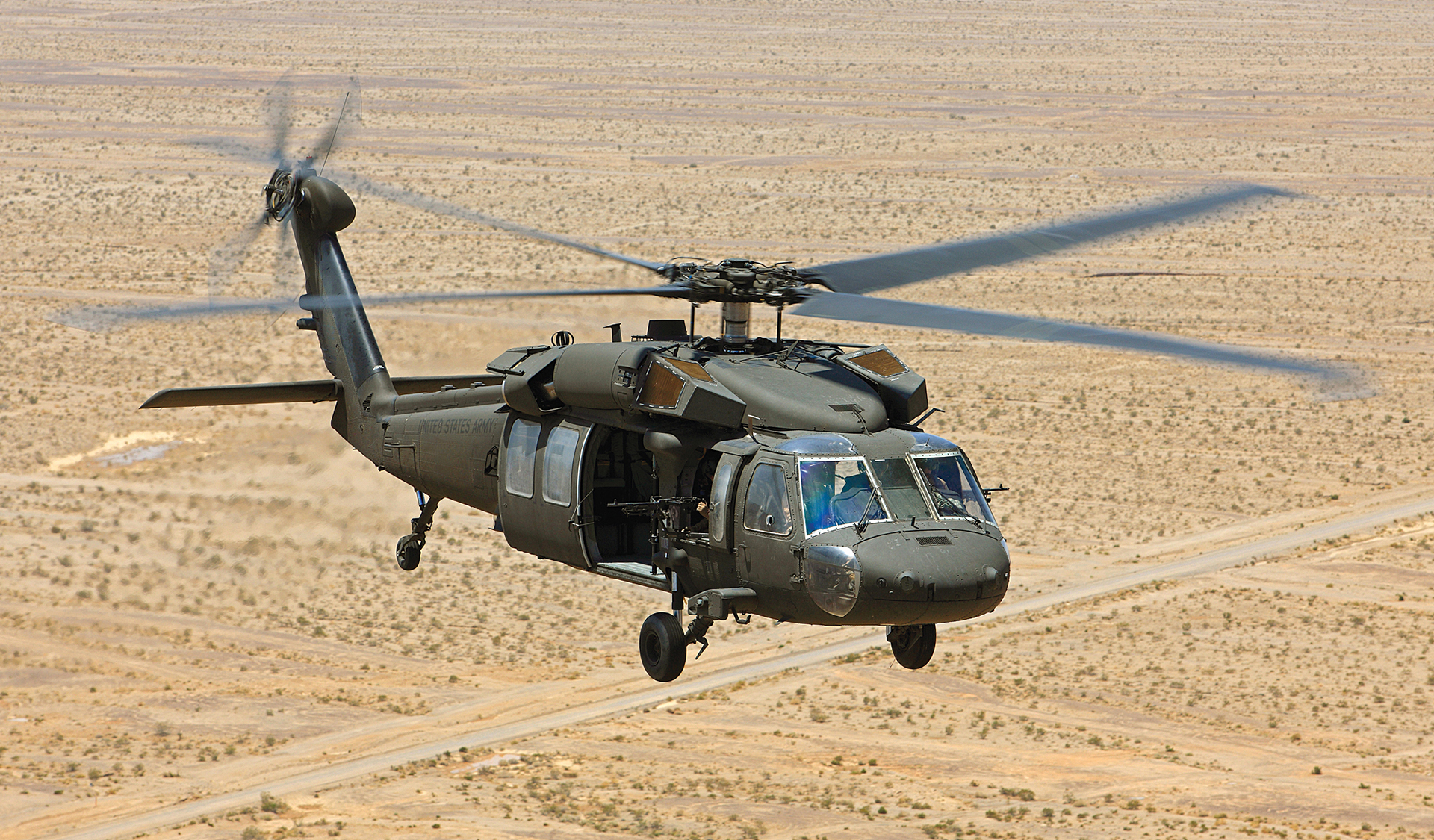Recognizing the Mechanics and Engineering Behind Uh 60 Helicopters
The UH-60 helicopter, commonly known as the Black Hawk, stands as a pinnacle of modern-day rotorcraft modern technology, personifying a blend of robust engineering and detailed auto mechanics. As we peel off back the layers of the UH-60's design, a world of elaborate systems and careful design comes to light.
History of UH-60 Helicopters
The history of UH-60 helicopters traces back to the late 1970s when the United States Army looked for a sophisticated and versatile energy helicopter to replace its aging fleet. In feedback to this demand, the Sikorsky Aircraft Company established the UH-60 Black Hawk helicopter. Presented in 1979, the UH-60 quickly came to be a staple in armed forces procedures as a result of its excellent capacities.
The UH-60 was made to master a selection of objectives, including troop transportation, medical emptying, digital war, and unique operations. Its capacity to adjust to different duties made it an important property to the united state Army and other army forces around the globe
Throughout the years, the UH-60 platform has gone through several upgrades and variations to enhance its efficiency and keep pace with advancing goal needs. These helicopters have seen substantial service in problems such as the Gulf Battle, Afghanistan, and Iraq, showcasing their dependability and flexibility in diverse functional settings. The UH-60's rich history is a testament to its long-lasting tradition as a leading utility helicopter.

Engine and Power Solutions
Making use of sophisticated propulsion innovation, UH-60 helicopters are furnished with sophisticated engine and power systems to ensure ideal efficiency and reliability in a series of functional situations. The UH-60, generally referred to as the Black Hawk, is powered by 2 General Electric T700-GE-701D engines, each efficient in supplying up to 1,940 shaft horse power. These turboshaft engines give the essential thrust for the helicopter to perform its objectives effectively, including army transport, clinical discharge, and battle assistance.

Rotor System and Aerodynamics
Just how do the rotor system and the rules of aerodynamics of UH-60 helicopters add to their operational performance and trip capabilities? The blades system of the UH-60 helicopter plays a critical role in providing lift and propulsion.
The rules of aerodynamics additionally play a crucial role in the efficiency of UH-60 helicopters. The streamlined fuselage and rotor blade style lower drag, permitting the helicopter to achieve higher speeds and much better fuel performance. The aerodynamic layout of the UH-60 likewise contributes to its capability to operate in diverse ecological conditions, including high elevations and warm temperatures.
Avionics and Flight Control Solution

In its elaborate coordination with the rotor system and the rules of aerodynamics of UH-60 helicopters, the avionics and flight control systems form a vital network of technologies shaping the airplane's operational capabilities. Avionics encompass the electronic systems made use of for interaction, navigating, and monitoring numerous aircraft features. In the UH-60, these systems consist of electronic display screens, communication radios, GPS navigating, climate radar, and autopilot systems. These avionics systems offer critical details to the pilots, improving situational recognition and making sure reliable and risk-free procedure of the helicopter.
The trip control systems of the UH-60 are accountable for converting the pilot's inputs right into the appropriate modifications to the blades system, making sure stable trip and ability to move. These systems consist of hydraulic actuators, servos, and computers that interact to control the primary and tail blades, in addition to other flight control surface areas. By specifically taking care of the helicopter's trip characteristics, these systems make it possible for pilots to do a vast range of goals, from transport and search-and-rescue to combat operations, with accuracy and confidence.
Duty and Applications in Aviation
The role and applications of avionics and flight control systems in aviation are important to guaranteeing the safe and efficient procedure of aircraft, consisting of UH-60 helicopters. Avionics systems in UH-60 helicopters incorporate a variety of electronic systems that help in navigating, communication, tracking, and controlling different airplane functions. These systems consist of digital display screens, autopilot systems, communication radios, GPS navigation devices, and weather radar. Trip control systems play an important role in read the full info here navigating the helicopter airborne, keeping security, and making certain accurate movements. The fly-by-wire modern technology utilized in modern-day UH-60 helicopters converts pilot inputs right into digital signals, which are then analyzed by the flight control computer systems to change the aircraft's control surfaces. Furthermore, these systems include security functions such as autopilot modes, surface recognition cautioning systems, and stability augmentation systems to improve the total safety and functional abilities of the UH-60 helicopters in different missions, consisting of troop transport, medical emptying, search and rescue, and aerial firefighting.
Final Thought
In conclusion, the UH-60 helicopter is a versatile aircraft with a rich background and progressed engineering. Its engine and power systems, blades system, the rules of aerodynamics, avionics, and flight control systems all work with each other to make it a reputable and efficient equipment.
In its intricate sychronisation with the blades system and aerodynamics of UH-60 helicopters, the avionics and flight control systems form an essential network of modern technologies shaping the airplane's operational abilities.The trip control systems of the UH-60 are accountable for equating the pilot's inputs into the proper changes to the blades system, guaranteeing secure trip and ability to move. Avionics systems in UH-60 helicopters encompass a variety of electronic systems that aid in navigation, communication, tracking, and managing numerous airplane functions. In addition, these systems include safety attributes such as autopilot settings, terrain recognition advising systems, and stability augmentation systems to improve the total safety and functional capabilities of the UH-60 helicopters in numerous goals, consisting of troop transport, clinical discharge, search and rescue, and aerial firefighting.
Its engine and power systems, blades system, aerodynamics, avionics, and flight control systems all function together to useful site make it learn the facts here now a efficient and trusted equipment.